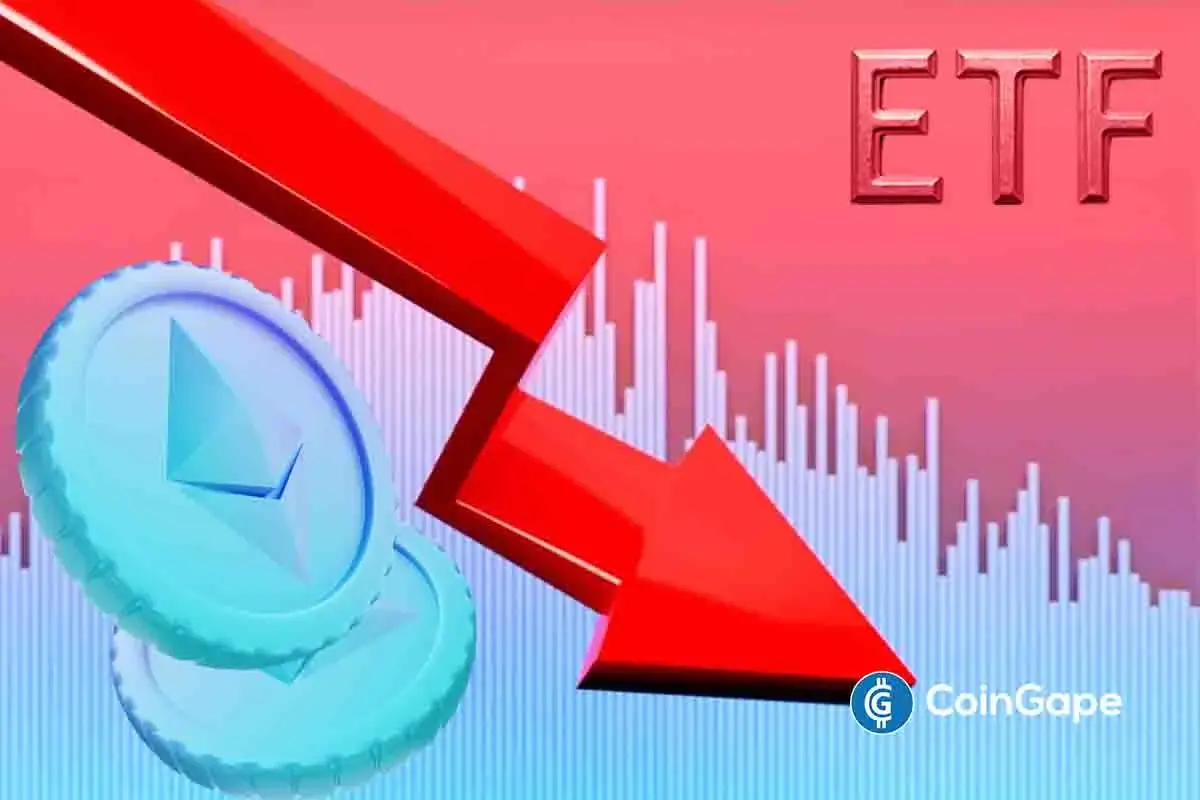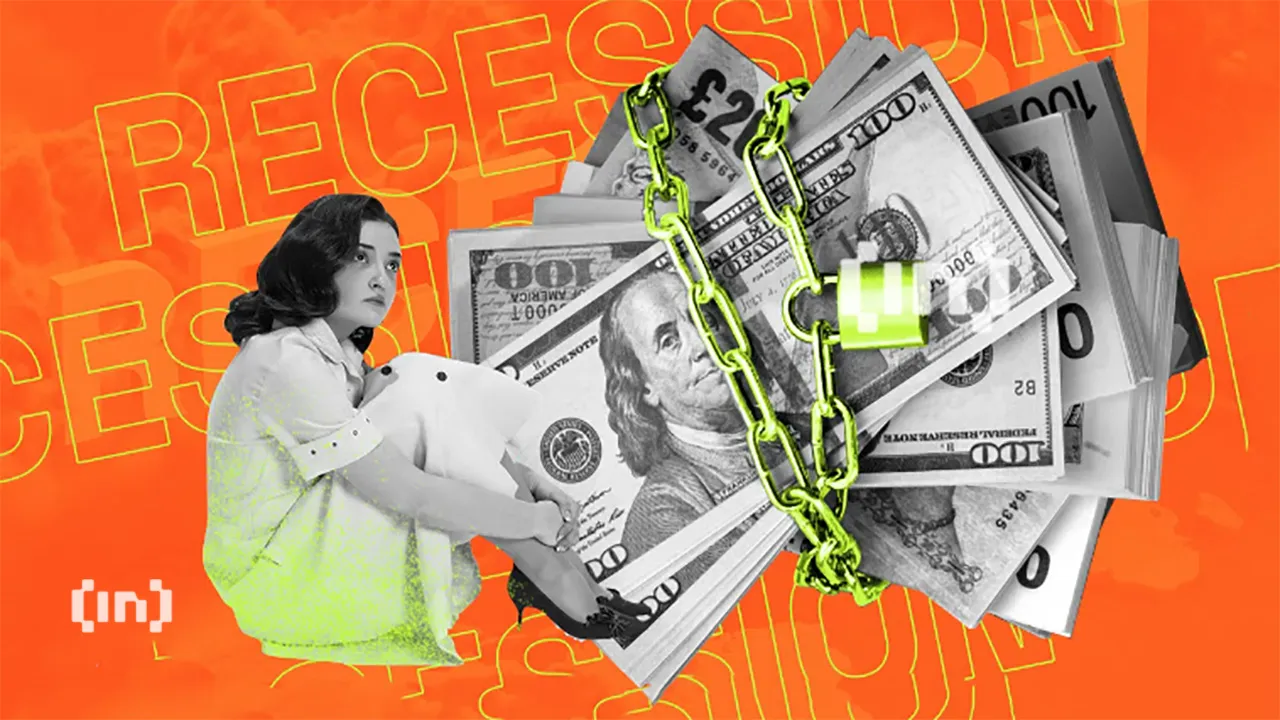Altcoin
Bloomberg Analyst Predicts $1B Influx from VanEck Spot Bitcoin ETF on ASX

The introduction of VanEck‘s spot Bitcoin ETF on the Australian Securities Stock Exchange (ASX) is set to significantly enhance the digital asset market in the Asia Pacific region. According to Bloomberg analyst Eric Balchunas, the ETF’s debut could funnel approximately $1 billion in assets under management into Australian digital asset ETFs, bolstering regional growth.
VanEck Spot Bitcoin ETF Boosts Asia Pacific Markets
Balchunas suggests that the VanEck spot Bitcoin ETF is not just a local phenomenon but a regional booster. The projected $1 billion increase in AUM in Australia could mirror significant inflows similar to those observed in larger markets like the United States. Furthermore, similar growth is anticipated in other parts of Asia, with Hong Kong and South Korea each expected to see an additional $1 billion in AUM. This suggests a potential $3 billion uplift across the Asia Pacific digital assets sector.
VanEck’s first-ever listing of spot bitcoin ETF on ASX this week could help bring in $1b of AUM into Aussie digital asset ETFs (equiv of $72b in US). This on top of our estimates of $1b for HK and $1b for South Korea adds up to $3b potential for Asia Pacific region. Here’s nice… pic.twitter.com/OUSiahUK05
— Eric Balchunas (@EricBalchunas) June 21, 2024
The enthusiasm for spot Bitcoin ETFs in Australia follows their approval and successful integration in other global markets. This trend underscores a growing international acceptance and interest in cryptocurrency investment vehicles. Therefore, the Australian market’s embrace of this ETF marks a pivotal step in expanding digital asset accessibility in the region.
Also Read: Not A Single Spot Bitcoin ETF Saw Inflows on Tuesday, New Outflows At $152 Million
BlackRock’s IBIT ETF Defies Market Outflows
A robust trading volume marked the debut itself. On its first day, the VanEck spot Bitcoin ETF saw a total trading volume of 1.9 million AUD. VanEck contributed an initial $985,000 (657,000 USD) to this figure, demonstrating a strong market reception. This fund serves as a feeder for the $647 million VanEck Bitcoin Trust in the United States, tying the Australian market’s performance directly to broader, more established cryptocurrency funds.
While the initial influx is promising, the broader picture shows a mixed sentiment in the global Bitcoin ETF market. For instance, despite general inflows, some established funds like Grayscale’s GBTC and Fidelity’s Wise Origin Bitcoin Fund experienced significant outflows, reflecting the ongoing volatility and varied investor strategies within the cryptocurrency market.
Contrastingly, not all Bitcoin ETFs are facing a downturn. BlackRock’s IBIT ETF, for instance, has bucked the trend, recently amassing an inflow of $1.48 million, which increased its total to a remarkable $14.67 billion. This growth starkly contrasts the outflows experienced by other funds in the sector, highlighting a divergence in investor confidence and market strategies.
Also Read: Hashdex Files 19b-4 For Combined Spot Bitcoin and Ethereum ETF
The presented content may include the personal opinion of the author and is subject to market condition. Do your market research before investing in cryptocurrencies. The author or the publication does not hold any responsibility for your personal financial loss.
Altcoin
Cardano Price To Hit $4 If This Happens, Analyst Says Despite 180M ADA Dump

A renowned crypto market analyst predicted that Cardano price could hit $4 ahead despite the current broader market uncertainty. ‘ALLINCRYPTO’ has forecasted a highly bullish outlook for the crypto recently, primarily against the backdrop of historical data. However, traders and investors are left scratching their heads as the market also saw massive ADA whale dumps, with 180 million coins offloaded.
Cardano Price Eyes $4, Analyst Predicts Citing Historical Data
According to ALLINCRYPTO’s X post on April 18, Cardano price is eyeing $4 as the analyst believes history is set to repeat itself. A major bull run lies ahead as the price is completing its final cycle, per the analyst.


For context, the ALLINCRYPTO’s chart spotlights how ADA had a massive bull run as of 2020 and continued till mid-2021. Citing this past performance, the analyst revealed that a $4 price target lies ahead.
Crypto market traders and investors are left speculating if such a feat is even possible amid broader market trends. It’s also noteworthy that historical performances don’t always guarantee future performances, given the dynamic nature of digital assets.
However, another renowned analyst has joined the fray by projecting a bullish outlook for Cardano price. Analyst Ali Martinez revealed in an X post on April 18 that the crypto is consolidating within a triangle, setting the stage for a potential 30% price move. This bullish prediction has slightly tilted the scales towards the optimistic side.


ADA coin’s price currently rests at $0.6298, up nearly 2.5% over the past day. The coin’s intraday bottom and peak were recorded as $0.612 and $0.6341, respectively.
Massive Whale Dumps Usher Caution
Besides, recent whale metrics have conversely stirred up some caution among investors, underscoring rising selling pressure on the asset. According to another X post by Ali Martinez, whales took advantage of the recent ADA price upswing to offload 180 million coins in the past 5 days.


This massive selling has also hinted at declining market confidence surrounding the cryptocurrency. As a result, market watchers are slightly apprehensive regarding the bullish predictions shared by the analysts.
Besides, a Cardano price prediction by CoinGape also revealed that bears remain in control of the asset at the moment, as per the 3-month bias indicator. In turn, broader market sentiments surrounding the coin’s long-term prospects remain shrouded in an enigma.
Disclaimer: The presented content may include the personal opinion of the author and is subject to market condition. Do your market research before investing in cryptocurrencies. The author or the publication does not hold any responsibility for your personal financial loss.
Altcoin
Chainlink Price To Hit $26 If LINK Breaks Past This Crucial Level

The Chainlink price is poised for liftoff, with a bullish rebound on the horizon. As LINK has soared past its key support level, analysts and traders remain bullish about the altcoin’s potential rally new heights.
Analysts like Ali Martinez and CRYPTOWZRD have identified critical levels for LINK, invoking the community’s attention. Let’s unveil Chainlink’s potential movements through the analyses of popular analysts.
Is Chainlink Price Ready for a Rebound?
In a detailed analysis, analyst Ali Martinez spotted key support and resistance levels for Chainlink. According to Ali’s analysis, Chainlink’s support level is established at $12.28, while $14.58 acts as a significant resistance hurdle.
With the Chainlink price breaking past its support line, which now acts as a foundation, the stage is set for a potential bullish reversal, signaling an upward trend. And, if LINK breaks past the $14.58 point, which has been a significant resistance point, further upside momentum comes into view, with potential new highs on the horizon.
Chainlink’s Next Target: Is $26 Within Reach?
According to market expert CRYPTOWZRD, Chainlink daily technical outlook is uncertain, with an indecisive close. However, the analyst highlighted that LINK is currently testing the significant $12.50 level. Given LINK’s oversold condition, its price movement is likely to follow Bitcoin’s trend.


Interestingly, as pointed out by CRYPTOWZRD, LINKBTC’s daily falling wedge formation suggests potential for an impulsive upside breakout. LINK itself is forming a daily falling wedge above its lower high trend line, indicating a possible rally towards the $16 resistance target and beyond.
Significantly, the chart presented by the expert indicates that LINK could hit $26 if it passes the resistance point. However, as per CoinGape’s Chainlink Price Prediction, LINK will reach a maximum of $15.24 in 2025.
Meanwhile, LINK’s intraday chart showed a lack of clear direction, with price movements confined to a narrow range. A breakout above $13.20 could present a trade opportunity, while a decline below $11.80 would signal a test of the main support level.
LINK Market Sentiment Analysis
In an “In/Out of the Money Around Price” analysis, Ali Martinez shared insights into the market sentiment for LINK. The analyst detailed the number of traders holding Chainlink at different price points.
At press time, Chainlink is trading at $12.81, up1.46%. Despite a 0.86% surge over the past week, LINK experienced a massive decline of 30.99% over the last month.
Notably, more addresses are holding LINK at a loss than at a profit. According to the chart, 53.06% of the holdings are “out of the money,” which means that they represent 78.24 million LINK bought at a price above the current $12.68.
At the same time, 44.63% of analyzed holdings, representing 65.81 million LINK, are ‘in the money,’ having been bought by traders at a price below $12.68. This data highlights potential support and resistance levels, with significant holdings at $12.47 and $14.19.
Disclaimer: The presented content may include the personal opinion of the author and is subject to market condition. Do your market research before investing in cryptocurrencies. The author or the publication does not hold any responsibility for your personal financial loss.
Altcoin
Lorenzo Protocol (BANK) Price Rallies 150% After This Binance Announcement

Lorenzo Protocol (BANK) price has defied the broader market’s recent uncertain trend by rallying 150% this Saturday. The institutional-grade asset management platform has stolen the spotlight primarily as a top CEX, Binance, unveiled a new listing for its native token. As a result, traders and investors are extensively eyeing this crypto, speculating whether the pump could sustain amid enhanced market exposure.
Lorenzo Protocol Price Bullish As Binance Futures Adds BANKUSDT Contract
At the time of reporting, BANK price traded at $0.05237, up by a staggering 150% in just a day. The cryptocurrency’s price surged from a bottom of $0.01839 intraday, in sync with Binance’s announcement.
According to an official press release by the crypto exchange on April 18, the platform’s futures trading division is adding the BANK USD-Margined perpetual contract to its stockpile of offerings. The platform’s colossal user base remains poised to enjoy up to 50x leverage while trading the asset. The timeline for this launch was set at 18:30 UTC, the same day.
Further, the top crypto exchange set the capped funding rate at +2.00%/-2.00%. Also, the same perpetual contract will be available for ‘Futures Copy’ trading, offering users enhanced opportunities to make returns.
For context, usual market sentiments about the coin’s future price action have turned highly bullish with the new offering. Traders and investors are expecting a substantial influx of funds into the token as the new listing paves the way for more investor interaction with the asset.
Now, crypto market watchers are thoroughly monitoring the token for further gains, highly optimistic amid an ongoing rally of 150% following the listing announcement. Lorenzo Protocol is an institutional-grade asset management platform that issues yield-bearing tokens backed by diverse underlying strategies.
Besides, it’s worth mentioning that Binance revealed another crypto listing this week, CoinGape reported. The CEX has revealed plans to open trading for Balance (EPT) shortly, garnering further attention among traders and investors.
Disclaimer: The presented content may include the personal opinion of the author and is subject to market condition. Do your market research before investing in cryptocurrencies. The author or the publication does not hold any responsibility for your personal financial loss.
-

 Altcoin22 hours ago
Altcoin22 hours agoEthereum ETFs Record $32M Weekly Outflow; ETH Price Crash To $1.1K Imminent?
-

 Market14 hours ago
Market14 hours agoPi Network Roadmap Frustrates Users Over Missing Timeline
-

 Market15 hours ago
Market15 hours agoMEME Rallies 73%, BONE Follows
-

 Ethereum21 hours ago
Ethereum21 hours agoEthereum Price Stalls In Tight Range – Big Price Move Incoming?
-

 Altcoin18 hours ago
Altcoin18 hours agoXRP Price History Signals July As The Next Bullish Month
-

 Market21 hours ago
Market21 hours agoAre Ethereum Whales Threatening ETH Price Stability?
-

 Market13 hours ago
Market13 hours agoSolana (SOL) Price Rises 13% But Fails to Break $136 Resistance
-

 Market20 hours ago
Market20 hours agoHow $31 Trillion in US Bonds Could Impact Crypto Markets in 2025




















✓ Share: